
Joseph Bonomi the Elder ARA (19 January 1739 –9 March 1808) was an Italian architect and draughtsman who spent most of his career in England where he became a successful designer of country houses. Bonomi was Robert Adam’s leading draughtsman.

Joseph Bonomi the Elder ARA (19 January 1739 –9 March 1808) was an Italian architect and draughtsman who spent most of his career in England where he became a successful designer of country houses. Bonomi was Robert Adam’s leading draughtsman.

He was born Giuseppe Bonomi in Rome [1] on 19 January 1739. He was educated at the Collegio Romano and then studied architecture with Girolamo Teodoli. [2] He made his early reputation in Rome before moving to London in 1767 at the invitation of Robert and James Adam, [2] who employed him as a draughtsman from 1768. [1] In his early years in England Bonomi also worked as an assistant to Thomas Leverton. [3]
He became a close friend of the painter Angelica Kauffman, whose cousin Rosa Florini he married in 1775. The next year he produced a design for a proposed sacristy for St Peter's in Rome, which may indicate that he visited his native city at around this time. [2] In 1783 Kauffman persuaded Bonomi to move back to Rome, where she was now living. He took his wife and children with him, and the move seems to have been intended to be permanent; however the next year the family returned to London, where Bonomi was to remain based for the rest of his life. [2]
Bonomi's earliest known independent work dates from 1784. After this he quickly became a successful designer of country houses. [3] In 1789, he was elected an Associate of the Royal Academy, and from then on constantly exhibited architectural drawings. Joshua Reynolds, president of the Academy, had wanted Bonomi to become a full Academician, regarding him as a suitable candidate for the vacant chair of perspective; the majority of the Academicians were, however, opposed to this suggestion, and Bonomi became an associate only, and that merely through the president's deciding vote. [4] Reynolds resigned his presidency in protest, but was soon re-elected. [2]
In 1804 he was appointed architect of St. Peter's at Rome, [1] [4] apparently as an honorary position. [2] [5]
He died in London on 9 March 1808, aged 69, and was buried in the Marylebone Cemetery. [2]
In 1775 he married Rosa Florini, Angelica Kauffman's cousin. [1] One son Ignatius Bonomi (1787–1870), was also an architect, and another, Joseph Bonomi the Younger (1796–1878), became an eminent sculptor, artist and Egyptologist. He also had a daughter Mary Anne who later married the York doctor George Goldie. Their son, also named George, became an architect of Catholic churches largely in the gothic style. These included the York Oratory.
In a paper read at the Royal Institute of British Architects in 1869, Wyatt Papworth summarised Bonomi's approach:
The style adopted by him was the Italian or modernised Roman; and he sought to obtain the characteristic effect appropriate to the object of his design, rather by just proportions and good details than by unnecessary ornamentation and littleness of parts, thus exhibiting his preference for the "Architecturesque" over the "Picturesque." [2]
He took a bold approach to Classical architecture, and was prepared to break its accepted rules by, for instance, omitting the frieze from an entablature, or supporting a portico on an odd number of columns. [3] A favourite innovation was to project the main portico of a house deep enough to form a porte cochère (i.e. a shelter for carriages ). [2] [3]

Notable works include:
Bonomi is briefly mentioned in Sense and Sensibility . In the novel, Robert Ferrars says to Elinor Dashwood (perhaps untruthfully) that his friend Lord Courtland had shown him three house designs by Bonomi and asked him to choose between them, but that Robert had burned them and advised Courtland to build a cottage instead.
{{cite book}}: CS1 maint: location missing publisher (link)Ignatius Bonomi (1787–1870) was an English architect and surveyor, with Italian origins by his father, strongly associated with Durham in north-east England.
James Wyatt was an English architect, a rival of Robert Adam in the neoclassical and neo-Gothic styles. He was elected to the Royal Academy of Arts in 1785 and was its president from 1805 to 1806.
The year 1806 in architecture involved some significant events.
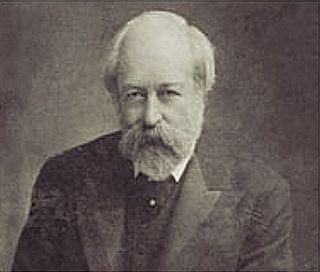
George Frederick Bodley was an English Gothic Revival architect. He was a pupil of Sir George Gilbert Scott, and worked in partnership with Thomas Garner for much of his career. He was one of the founders of Watts & Co.
William Wilkins was an English architect, classical scholar and archaeologist. He designed the National Gallery and University College London, and buildings for several Cambridge colleges.

Sir Arthur William Blomfield was an English architect. He became president of the Architectural Association in 1861; a Fellow of the Royal Institute of British Architects in 1867 and vice-president of the RIBA in 1886. He was educated at Trinity College, Cambridge, where he studied Architecture.
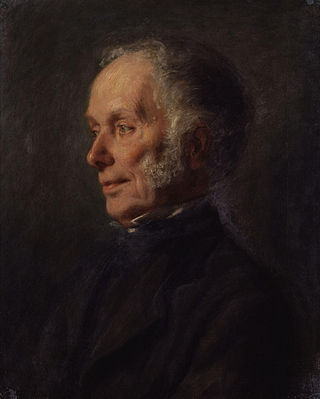
Joseph Bonomi the Younger was an English sculptor, artist, Egyptologist and museum curator.
Frederick Etchells was an English artist and architect.
George Papworth (1781–1855) was a British architect who practised mainly in Ireland during the nineteenth century.
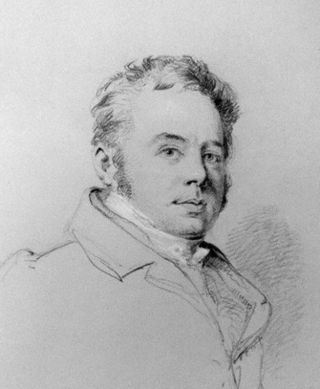
John Buonarotti Papworth was a British architect, artist and a founder member of the Royal Institute of British Architects.
John Peter Gandy, later John Peter Deering, was a British architect. He served as a member of parliament (MP) from 1847 to 1848.

Packington Hall is a 17th-century mansion situated at Great Packington, near Meriden, Warwickshire, England the seat of the Earl of Aylesford. It is a Grade II* listed building.

St James' Church is an 18th-century chapel situated in the grounds of Packington Hall, near Meriden, Warwickshire. It is a Grade I listed building.
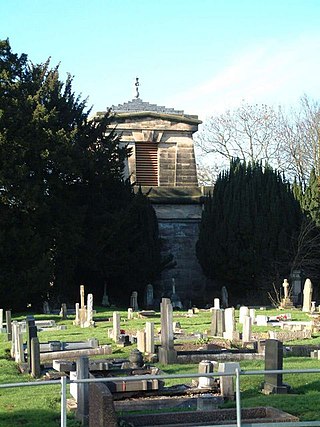
Charles Heathcote Tatham, was an English architect of the early nineteenth century.
Edward Goldie (1856–1921) was an English ecclesiastical architect who was notable for building Roman Catholic churches, mainly in the form of Gothic Revival architecture. He was the son of George Goldie.
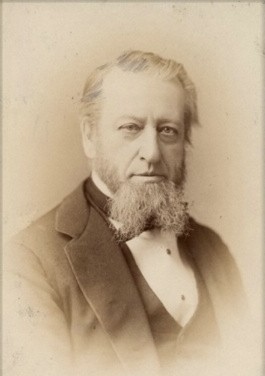
Wyatt Angelicus van Sandau Papworth (1822–1894) was an English architect, surveyor and antiquarian. He is best known for his editorial work on the part-published Dictionary of Architecture, appearing 1853 to 1892, and the 1867 edition of Joseph Gwilt's Encyclopædia of Architecture.

Edgar George Papworth Snr was an English sculptor. He studied at the Royal Academy of Arts where he later exhibited works; he created sculptures of classical themes, and of notable people of the day.
John Papworth (1750–1799) was an eminent plasterer and stuccoist working in London in the late 18th century.

Thomas Wyatt was an East Indies merchant from Willenhall in the English Midlands. He commissioned Willenhall House from John Buonarotti Papworth in 1829 which was built on an estate that he purchased in north London and which he named Willenhall.

The Blickling Park mausoleum is a Grade II* listed building in the grounds of Blickling Hall, Norfolk, England. It was commissioned in 1793 by Lady Caroline Suffield, the daughter of John Hobart, 2nd Earl of Buckinghamshire, as a tomb for her father and his two wives. The structure was designed by the Italian architect Joseph Bonomi the Elder and built by Henry Wood. It is in the form of a pyramid, modelled on that of Cestius in Rome, as an early example of Egyptian Revival architecture. The structure is now in the ownership of the National Trust.